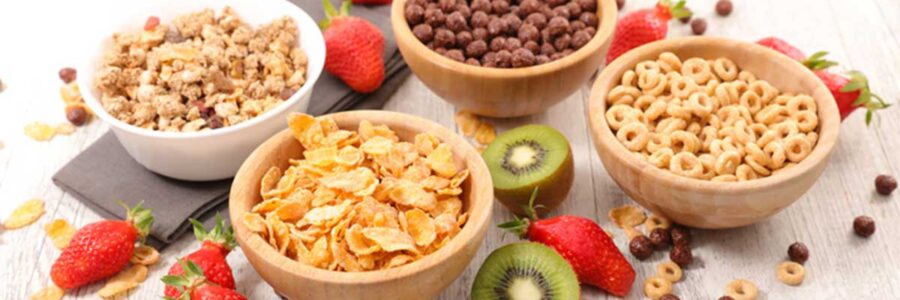Cereal is a convenient and popular food worldwide, partly because of its long shelf life. Preservatives such as butylated hydroxyanisole (BHA) and butylated hydroxytoluene (BHT) make it possible. However, with rising concerns about their safety, it is important to understand their purpose, potential risks, and alternatives. This article aims to explore the safety of BHA and BHT in cereals and provide information to help consumers make informed decisions.
Understanding BHA and BHT:
Food manufacturers commonly use BHA and BHT as synthetic antioxidants to preserve food and extend its shelf life. They prevent the oxidation of fats and oils in food, which can lead to spoilage, off-flavors, and loss of nutritional value. Food manufacturers widely use BHA and BHT in various processed foods, including cereals, potato chips, and vegetable oils.
How BHA and BHT Keep Cereal Fresh:
Cereal contains fats that can become rancid over time, impacting flavor and nutritional quality. BHA and BHT help preserve cereal by slowing down the oxidation process, leading to rancidity. By doing so, these preservatives maintain the cereal’s taste, texture, and nutritional value, ensuring a fresh-tasting product for an extended period.
Safety Concerns:
Some studies have linked BHA to potential health risks, including cancer. BHA has been classified by the International Agency for Research on Cancer (IARC) as a possible human carcinogen. However, it’s important to note that the amounts of BHA used in these studies were significantly higher than what is typically found in food products. Similarly, BHT has been linked to potential health risks, although the evidence is not as strong as it is for BHA. Some animal studies have found that high doses of BHT can cause liver and kidney damage. However, the US Food and Drug Administration (FDA) and the European Food Safety Authority (EFSA) have evaluated the safety of BHA and BHT and determined that they are safe for consumption in the amounts typically found in food products.
Alternatives to BHA and BHT in Cereal:
Natural antioxidants like vitamin E (tocopherols) and rosemary extract are common alternatives to BHA and BHT for preserving freshness. They can help prevent oxidation and maintain cereal quality, albeit potentially not as effectively as synthetic preservatives. In recent years, more cereal manufacturers have switched to these natural alternatives to satisfy consumer demand for cleaner, more natural ingredients. Another option for consumers who want to avoid BHA and BHT is to choose cereals made with ingredients that are less prone to oxidation, such as whole-grain cereals that contain more natural antioxidants.
Conclusion:
While regulatory agencies have deemed BHA and BHT safe for consumption in the amounts typically found in food products, some studies have raised concerns about their potential health risks. Consumers may prefer to avoid these additives by choosing natural preservatives or cereals made with ingredients that are less prone to oxidation.
By being aware of the ingredients in their cereal and understanding the potential risks and benefits associated with BHA and BHT, consumers can make informed decisions about the foods they choose to consume.
References:
- Branen, A. Larry, P. Michael Davidson, Seppo Salminen, and John H. Thorngate. Food Additives. 2nd ed., CRC Press, 2002.
- O’Neil, Catherine E., et al. “Out-of-Hand Nutritional Comparison of Brands of Fortified Cereals.” Journal of the American Dietetic Association, vol.


